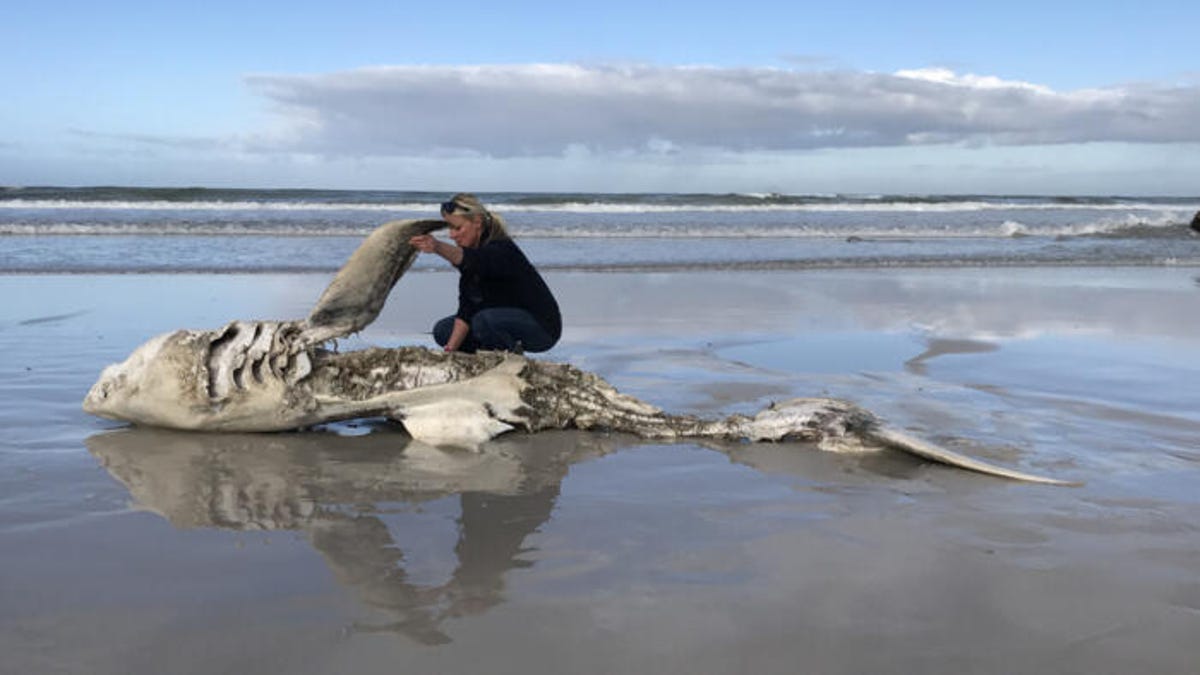Port and Starboard are two maritime menaces, tearing up and down South Africa’s coast in prime great white shark territory. The pair of killer whales, or orcas, are easily identified by their flopped-over dorsal fins (just like Free Willy) and, frequenting an area of ocean near Gansbaai since 2015, they’ve seemingly frightened away all the great whites.
Great whites typically aggregate around the coast of South Africa and prey on the Cape fur seal colonies there. Gansbaai is one of several regions where the waters can be chummed, which makes it a great spot for cage diving with the ocean’s apex predator. There’s years of sighting data showing Gansbaai as a hotbed of activity for great whites, with an average of nine sharks spotted each day between 2008 and 2011. That’s a lot.
Then the killer whales moved in.
In a new study, published in the African Journal of Marine Science on Wednesday, researchers examined years of tracking and sensor data to show how great white shark numbers have changed around Gaansbai — and, tentatively, suggest that killer whales might have quite literally scared the sharks away.
Before 2017, about six shark sightings were being reported per day.
But then dead great whites started washing up, their livers ripped out, along the South African coastline. In total, eight sharks washed ashore between 2017 and 2020.


Lead author Alison Towner inspects the carcass of a great white shark.
Marine Dynamics, Dyer Island Conservation Trust, Hennie OttoAfter the orcas arrived and the carcasses started showing up, sightings of live sharks plunged.
“The more the orcas frequent these sites, the longer the great white sharks stay away,” said Alison Towner, a shark biologist at the Dyer Island Conservation Trust and lead author on the paper, in a statement.
Towner has long studied the sharks off Gansbaai and, along with her colleagues, noted this unusual change in shark numbers. The team performed necropsies of the carcasses that showed they’d been attacked by killer whales, which had ripped out the energy-rich livers of the sharks. Though the team didn’t directly witness the predation, they’d been seeing a terrible twosome in the area often — the floppy-finned Port and Starboard.
The great whites that fled often wouldn’t return to the region for weeks or months.
An interesting wrinkle in the study is that bronze whaler sharks, another large shark that frequents the South African coast, started moving in as the great whites moved out. Great whites sometimes feed on the bronze whalers, but the bronze whalers aren’t quite as frightened of orcas… so they felt safe enough to travel into Gansbaai and feed on the seal population. However, Towner notes that even the bronze whalers are now being attacked by orcas. It seems no shark is safe.
One of the lingering questions the research attempts to answer is why killer whales like Port and Starboard might suddenly start preying on great whites. The team offer up a number of reasons, including declines in prey that may have rejigged the ranges of killer whales and the sharks and brought them closer together.
It’s also possible the twin terrors aren’t to blame — maybe another terror for sharks is doing just as much damage: Us. The researchers suggest that fishing and fishery-induced declines in prey could also be responsible for the overall declining numbers of great whites in Gansbaai.


